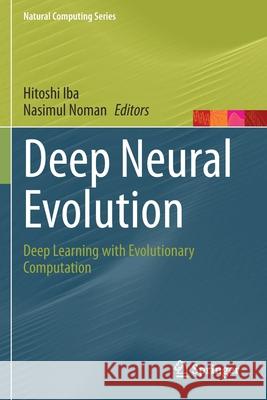Deep Neural Evolution: Deep Learning with Evolutionary Computation » książka
topmenu
Deep Neural Evolution: Deep Learning with Evolutionary Computation
ISBN-13: 9789811536878 / Angielski / Miękka / 2021 / 438 str.
Deep Neural Evolution: Deep Learning with Evolutionary Computation
ISBN-13: 9789811536878 / Angielski / Miękka / 2021 / 438 str.
cena 805,10
(netto: 766,76 VAT: 5%)
Najniższa cena z 30 dni: 693,97
(netto: 766,76 VAT: 5%)
Najniższa cena z 30 dni: 693,97
Termin realizacji zamówienia:
ok. 22 dni roboczych.
ok. 22 dni roboczych.
Darmowa dostawa!
Kategorie:
Kategorie BISAC:
Wydawca:
Springer
Seria wydawnicza:
Język:
Angielski
ISBN-13:
9789811536878
Rok wydania:
2021
Wydanie:
2020
Numer serii:
000304236
Ilość stron:
438
Waga:
0.62 kg
Wymiary:
23.39 x 15.6 x 2.31
Oprawa:
Miękka
Wolumenów:
01
Dodatkowe informacje:
Wydanie ilustrowane











